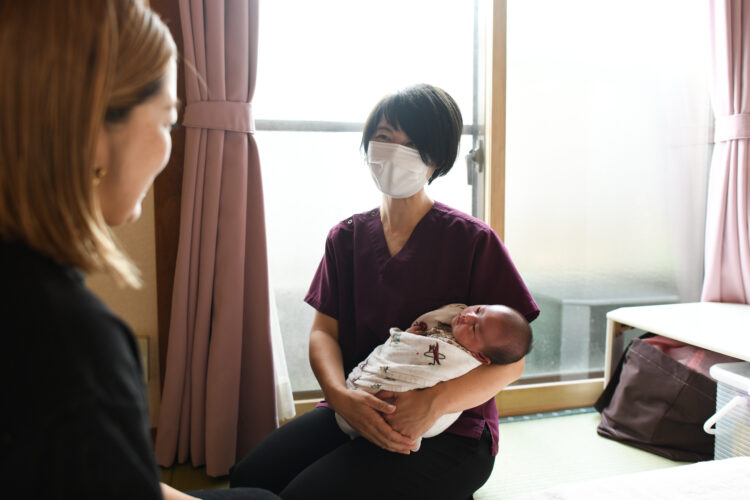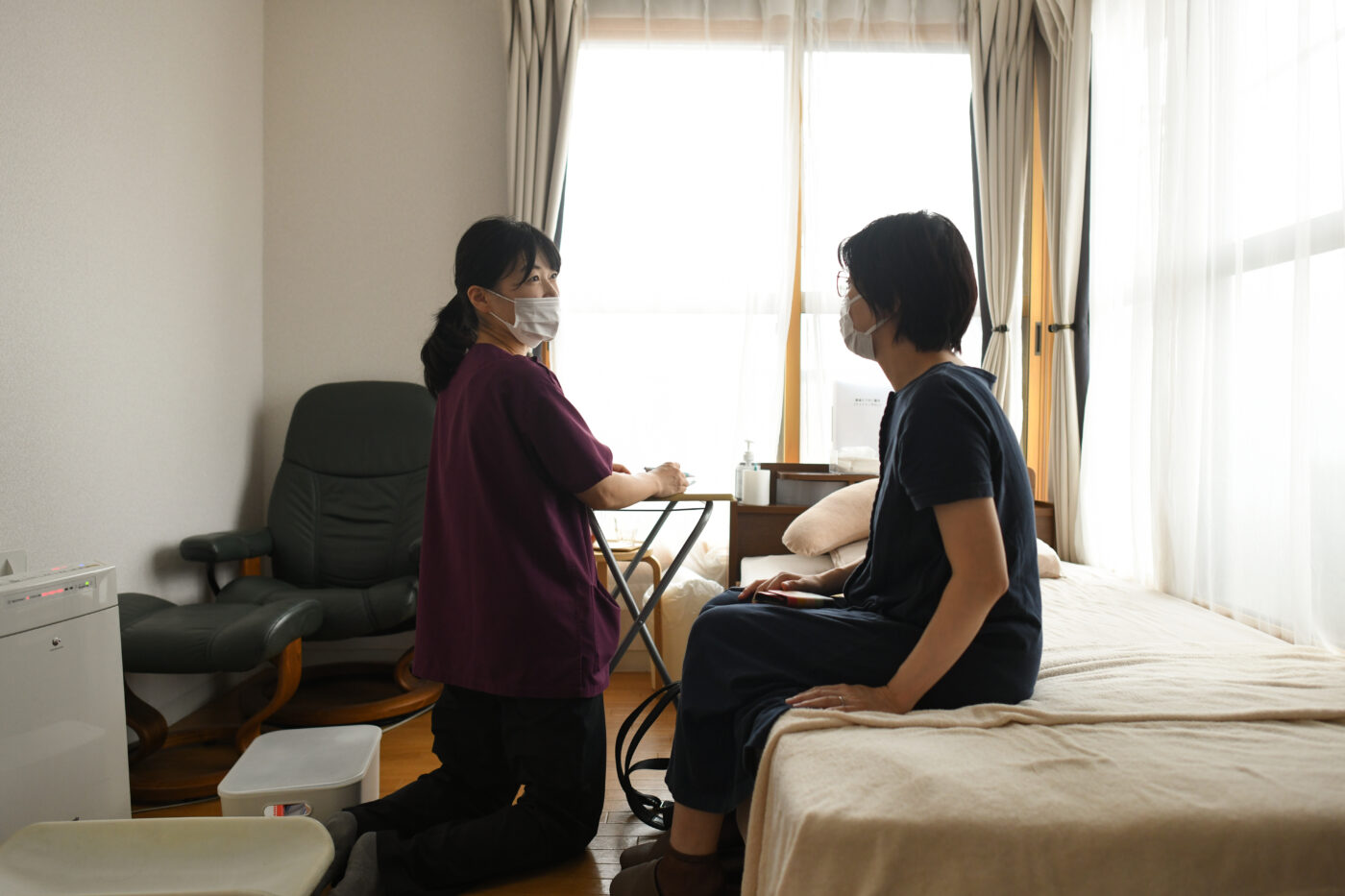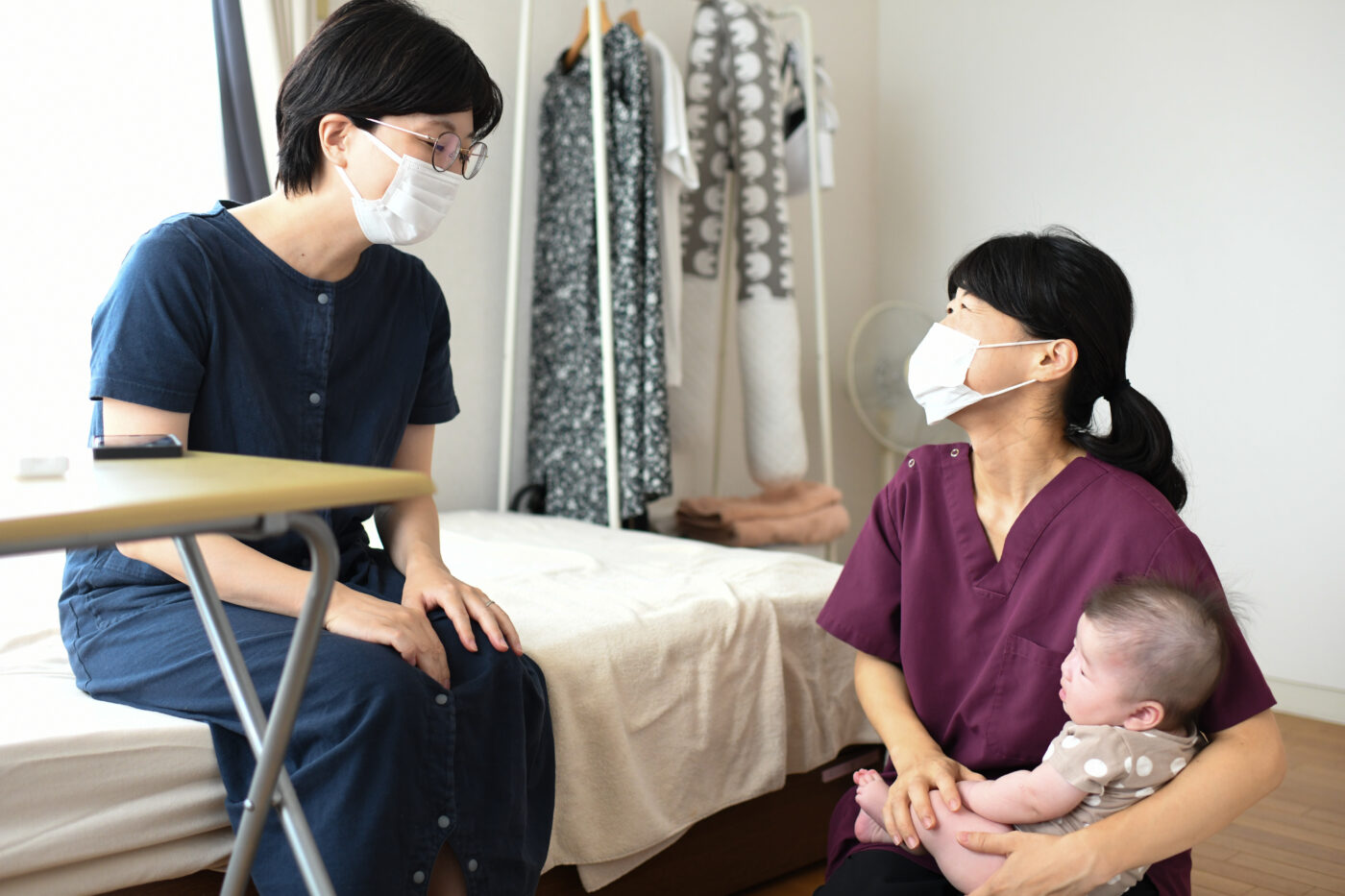Midwives in Crisis: How Japanese Midwives Prepare for and Respond to Emergencies

Midwives play a critical role in crisis preparedness and response, ensuring that women’s health and rights are prioritised in planning process, and upholding the rights and ensuring the safety and well-being of women, newborns, and families when crises strike. In Japan, where earthquakes, tsunamis, and other natural disasters are a common occurrence, midwives are trained to respond swiftly, often in collaboration with the country’s nurses and other health professionals.
To better understand how midwives in Japan prepare for disasters, we spoke with Naoko Nakane, President of the Japanese Midwives Association, Hiroko Imoto, an executive member of the Japanese Nursing Association, and Hanae Miyawaki, from the Midwives Division, Department of Health Promotion Policy at the Japanese Nursing Association.
Both the Japanese Midwives Association (JMA) and the Japanese Nursing Association (JNA) are members of the ICM. This interview is part of a series of features for International Day of the Midwife (IDM), highlighting midwives’ preparedness and response in crises.

Disaster Preparedness in Japan
Japan has one of the world’s most comprehensive disaster response systems, shaped by its history of major earthquakes and tsunamis. Both JNA and JMA play a leading role in emergency response. The Japanese government dispatches Disaster Relief Nurses and Disaster Liaison for Pediatrics and Perinatal Medicine, some of whom are also midwives, to the affected areas.
What Are Disaster Relief Nurses?
Disaster Relief Nurses undergo specialised training to provide support disaster-affected communities. Their role includes coordinating with the midwifery, nursing associations and local governments in disaster-affected areas, assessing health needs, and ensuring continuity of care in crisis situations. In Japan, midwives must first qualify as registered nurses, which means Disaster Relief Nurses who are also midwives bring expertise in sexual, reproductive, maternal, newborn and adolescent health (SRMNAH). While most Disaster Relief Nurses are general nurses, those with midwifery training are particularly valuable in addressing SRMNAH needs.
Initially, Disaster Relief Nurses were trained and dispatched as a unique system of the JNA. However, JNA has worked to have Disaster Relief Nurses included in the national legal framework to ensure a structured, rapid response in disaster-stricken areas in response to the increasing frequency of disasters. With the Revised Medical Care Law came into force in 2024, the Japanese government officially recognised Disaster Relief Nurses as part of the country’s national disaster response system, providing legal status and funding to support their critical work.
“Midwives are an essential part of disaster response teams because they provide specialised care for women’s health, which general nurses may not be trained for,” explains Naoko Nakane. “Our role as midwives in crisis situations is not only to support childbirth but also to ensure sexual, reproductive, maternal, newborn and adolescent health needs are met,” explains Naoko Nakane.
To ensure an effective response, the Japanese Nursing Association has developed published a disaster response manual in 2013 as a guide to promote the creation of manuals at each facility. Because health facilities in Japan have different roles depending on their region, this document is not intended as a comprehensive, one-size-fits-all manual, but rather as a flexible tool to help institutions develop their own context-specific plans. A new version of the manual was released in 2024; it is currently only available in Japanese.
The Role of Midwives in Disaster Response
Midwives step in to the affected area immediately after disasters to provide urgent SRMNAH services through the Disaster Liaison for Perinatal Pediatrics, the medical teams, nursing teams and volunteer groups. Their role evolves depending on the phase of the emergency:
- Acute Phase (First 24-48 hours): The Self-Defence Forces and Japanese Red Cross Society provide immediate emergency medical care. Red Cross midwives assist in urgent maternal and newborn health needs.
- Stabilisation Phase (First week): Midwives assess pregnant women for complications, provide newborn care, and support breastfeeding mothers, especially when access to clean water is limited.
- Recovery Phase (Weeks to months): Community midwives provide contraceptive counselling, reproductive health services, and mental health support to women affected by the crisis.
“In some cases, midwifery clinics are designated as safe spaces for pregnant women and new mothers in disaster zones,” adds Naoko Nakane. “This helps ensure that maternity care continues even when hospitals are overwhelmed.”
Lessons from the Past
One of the most significant tests of Japan’s midwifery disaster preparedness came during the 2011 Great East Japan Earthquake and Tsunami.
“In some of the hardest-hit areas, midwives have helped women give birth with no electricity, no running water, and only the most basic equipment,” says Naoko Nakane. “Many hospitals lost power, making fetal monitors and other medical devices useless. Midwives relied on their hands, experience, and knowledge to assist births in improvised settings.”
A remarkable outcome of this crisis was that almost 100% of newborns in affected areas were breastfed, even amid extreme hardship. With scarce access to clean water, midwives were there to provide extra support, helping mothers feel confident and capable of nourishing their babies despite the difficult conditions.
These experiences have shaped Japan’s disaster training for midwives, ensuring they are equipped to deliver babies and provide essential care without reliance on technology.
Training, Preparedness, and Sustainable Disaster Response
Japan has mandatory firefighting and evacuation drills twice a year for hospitals, including those that provide maternity services. Since the 2011 Great East Japan Earthquake, there has been a growing recognition of the need for perinatal-focused disaster training. While hospitals are required to conduct general disaster preparedness drills, recommendations have been made to ensure pregnant women and newborns receive priority during emergencies.
“Twice a year at least, firefighting and evacuation drills must take place,” explains Hiroko Imoto. “After the East Japan Earthquake in March 2011, we saw that many maternity hospitals and centres were completely destroyed. Since that experience, we recognised the need for drills specifically dedicated to perinatal care. If a woman is in labour when a disaster strikes, should she remain in the facility or be evacuated? Hospitals must prepare for these scenarios.”
However, training alone is not enough. One of the biggest challenges midwives and nurses faced in past disasters was that disaster relief nurses worked on a voluntary basis in some cases, covering their own costs of transportation, lodging, and other expenses. Given the frequency of disasters in Japan, this led to the discussion about the need to establish a system in the community from normal times to provide stable nursing support.
“We advocated for years to make Disaster Relief Nurse a government-funded initiative,” says Imoto. “With the Revised Medical Care Law was put into force in 2024, the national government formally recognised and funded the program, ensuring nursing professionals including midwives are supported to do their critical work during crises.”
This policy change was a major milestone in strengthening Japan’s disaster response system. By ensuring nursing professionals including midwives receive institutional and financial support, Japan has taken a significant step toward making maternal and newborn care a permanent, well-integrated part of emergency response efforts.
Strengthening Global Preparedness
What can midwives in other countries learn from Japan’s approach to disaster response? According to Naoko Nakane and Hiroko Imoto, the key is preparation and policy integration:
- Establish contracts between midwives and local governments to ensure maternal health services continue in crises.
- Train midwives to respond effectively in any crisis by equipping them with skills to provide care in resource-limited environments, including non-hospital settings.
- Advocate for legal recognition and funding for midwives’ role in disaster response.
“In Japan, we must always be prepared,” says Imoto. “We experience earthquakes, tsunamis, typhoons, and extreme weather events every year. But midwives can play a critical role in disaster response anywhere in the world. Preparedness saves lives.”
As we approach the International Day of the Midwife, the experience of midwives in Japan reminds us that midwives are critical in every crisis—before, during, and after a disaster.
